A large retirement garden can be a fantastic space for creativity and enjoyment. Engaging in fun gardening projects not only enhances the beauty of the garden, but also provides a rewarding way to stay active and connected with nature. There are countless possibilities to explore, from creating themed garden areas to experimenting with different plant combinations.
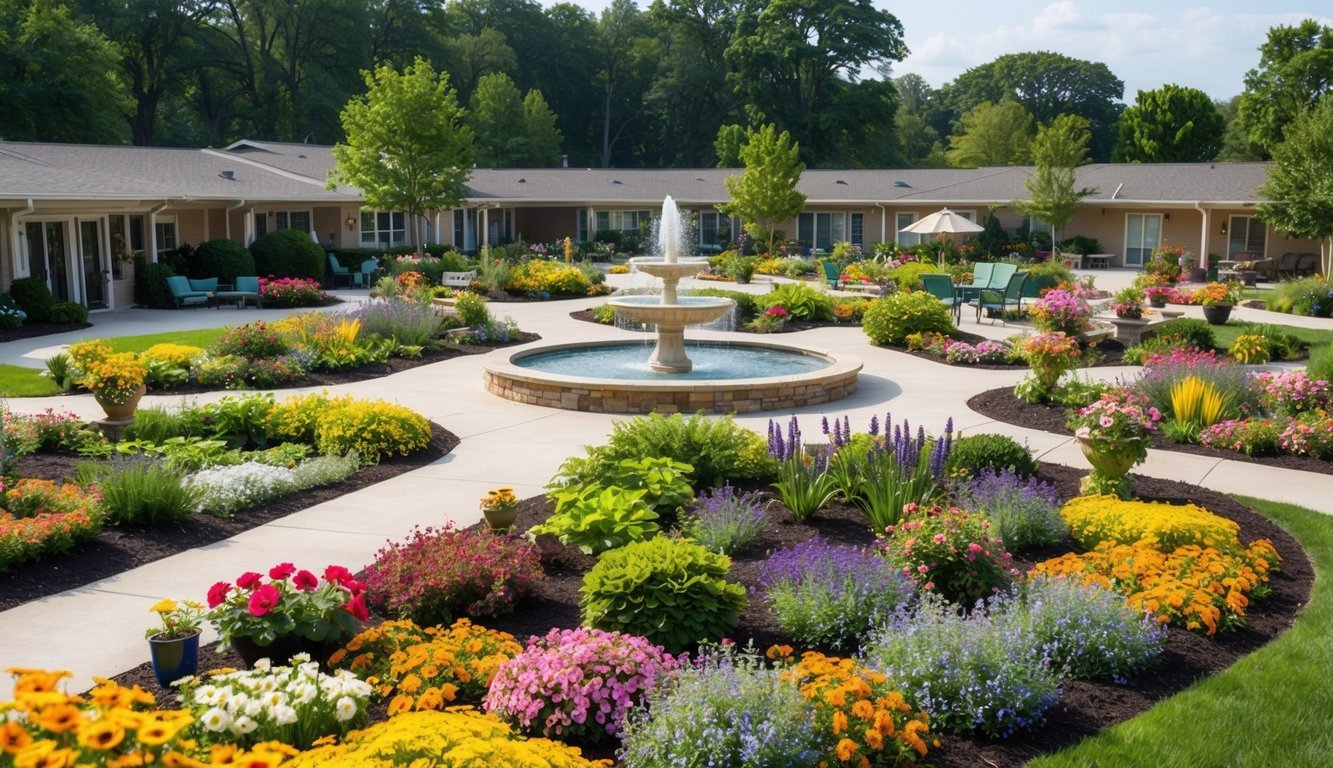
Gardening offers a relaxing and fulfilling pastime, and a spacious garden opens up even more exciting avenues for experimentation.
Whether you’re interested in growing vegetables, designing decorative spaces, or simply enjoying nature, there’s something for everyone.
These projects can help make the most of the garden while also keeping you engaged and entertained.
1) Build a Zen Garden
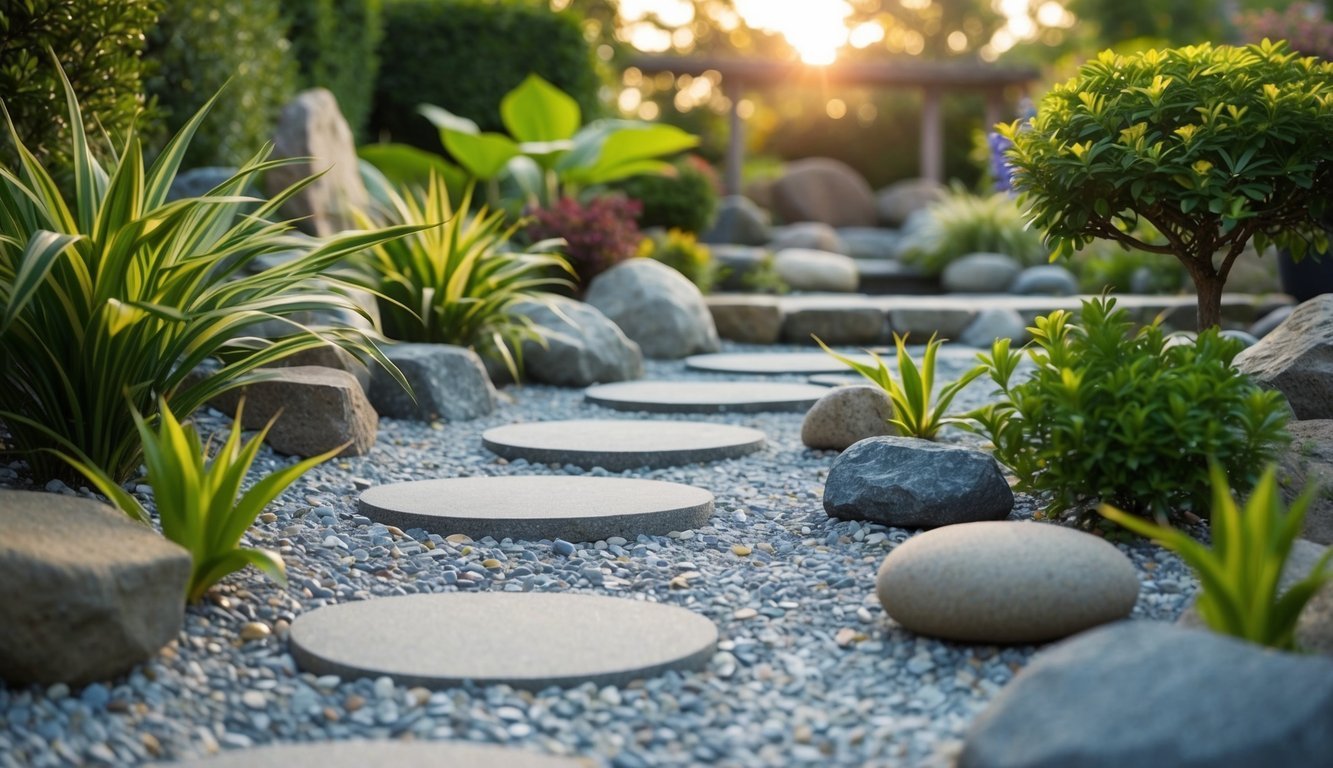
Creating a Zen garden is a rewarding project that offers both beauty and tranquility.
It’s a perfect way to unwind and reconnect with nature in my retirement garden.
To start, gather materials like pebbles, sand, and a few rocks.
The rocks can symbolize mountains or natural elements, and smooth pebbles can create a calming effect.
Next, design the layout.
You can include winding paths and simple structures like a small pagoda or bamboo fence.
These add character without overwhelming the space.
Raking the sand is my favorite part.
It’s a soothing activity that creates patterns resembling water ripples.
You can easily get lost in the moment, reflecting on your day.
I also like to add some greenery.
A few carefully placed plants can introduce life and color, enhancing the peaceful vibe.
It’s a great way to enjoy the changing seasons.
In the end, your Zen garden becomes a personal retreat, a space to breathe, and a simple joy of retirement life.
Install a Birdwatching Station
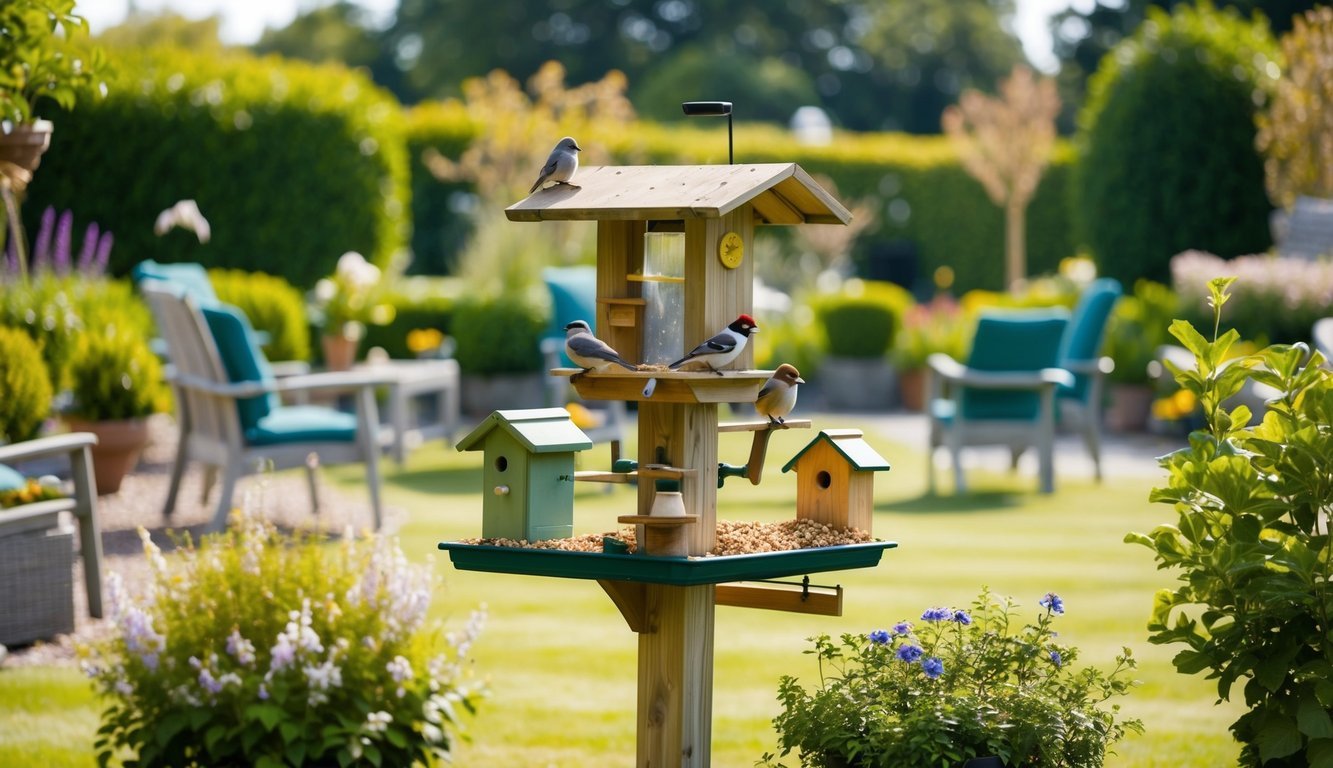
Creating a birdwatching station in my garden has brought incredible joy.
I love sitting outside, surrounded by nature, watching the birds come and go.
First, set up a bird feeder.
I chose one that attracts various species, like songbirds and chickadees.
I fill it with sunflower seeds, which seem to be a favorite.
I also added a small water source.
A simple birdbath can make a big difference, providing birds with a place to drink and bathe.
It’s easy to clean and keeps the water fresh.
To enhance the environment, I planted native flowers and shrubs.
These not only provide natural food sources but also create shelter for the birds.
I find that having a mix of feeders and plants encourages more visitors.
Setting up the station was straightforward and has turned into a favorite pastime for me.
Each day brings new sights and sounds that make my garden feel alive.
3) Create a Butterfly Sanctuary

Creating a butterfly sanctuary in my garden is one of my favorite projects.
It brings color and life to my outdoor space.
I start by planting milkweed, the main food source for Monarch caterpillars.
I like to group at least six plants together in a sunny spot.
This way, they’ll have plenty to munch on.
To attract adult butterflies, I add nectar-rich flowers.
I choose a variety of plants with different colors and shapes.
This diversity invites more butterflies and creates a visually appealing garden.
I also set up a puddling area.
I fill a shallow dish with sand and add water.
This helps butterflies hydrate.
Having warm spots is essential too.
I place flat rocks in sunny areas so butterflies can warm up when needed.
With a bit of planning and care, my butterfly sanctuary becomes a vibrant retreat for these pollinators.
It’s a joy to see them fluttering around while I relax in my garden.
4) Set Up a Hammock Retreat
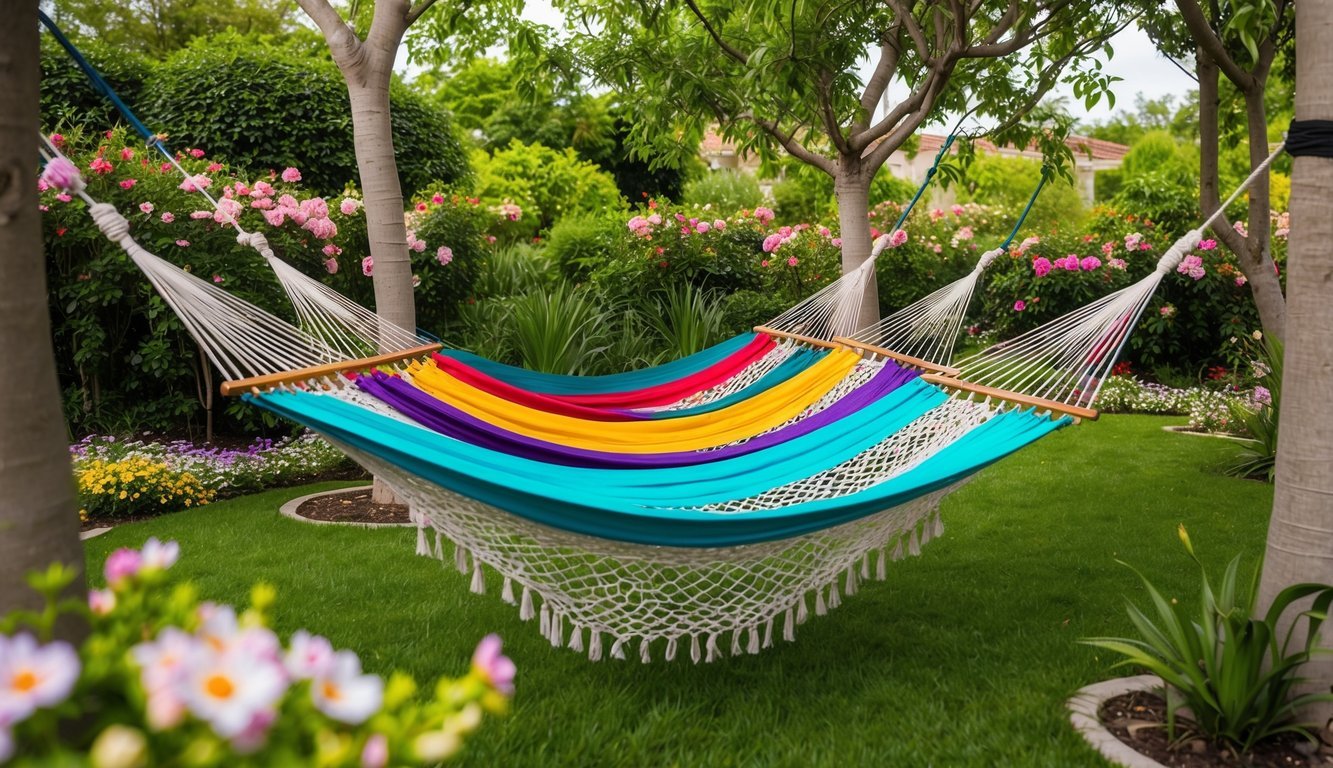
Creating a hammock retreat in my garden is one of the most enjoyable projects I’ve taken on.
I love selecting the perfect spot between trees or using a freestanding frame if trees aren’t available.
Choosing a comfortable hammock is key.
I prefer a double-wide style that allows me to stretch out with plenty of room.
The fabric choice is important too; something breathable and soft enhances the relaxation experience.
I often add some colorful throw pillows and a soft blanket to make the space inviting.
It’s great to have a small table nearby for drinks or snacks while I unwind.
Adding lighting, like string lights or lanterns, makes the retreat cozy in the evening.
I enjoy sitting here with a book or simply soaking up the surroundings.
This setup not only creates a peaceful space but also encourages family and friends to join me for some quality outdoor time.
It’s a simple project that transforms my garden into a serene escape, perfect for relaxation.
5) Plant a Native Wildflower Meadow
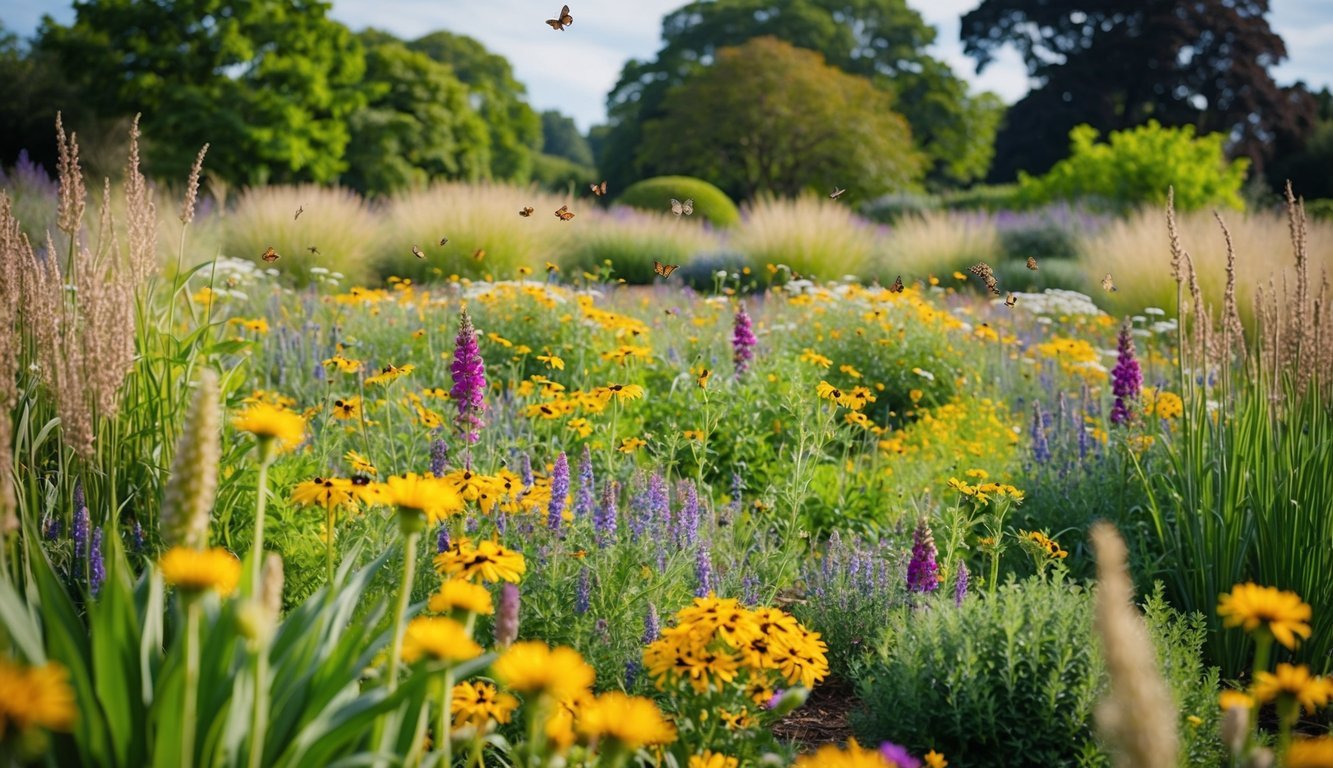
I’ve always wanted to create a native wildflower meadow in my garden.
It’s a great way to bring color and life to the yard while supporting local wildlife.
First, choose a sunny spot that gets at least six hours of sunlight each day.
Wildflowers thrive in bright conditions, so that’s key for success.
Next, clear any existing vegetation.
Removing turf and weeds helps prevent them from taking over my new meadow.
A method I’ve found effective is soil solarization; covering the area with black plastic for a few weeks works wonders.
Then comes the fun part: selecting native wildflower seeds.
I love choosing varieties that are well-suited to my local environment.
This ensures they thrive with minimal care.
After preparing the soil, I sow the seeds and gently rake them in.
Keeping the area well-watered initially helps with their establishment, too.
Watching my meadow flourish and seeing bees and butterflies visiting is so rewarding.
It’s a simple project that adds beauty and biodiversity to my garden!
6) Design a Secret Garden Path
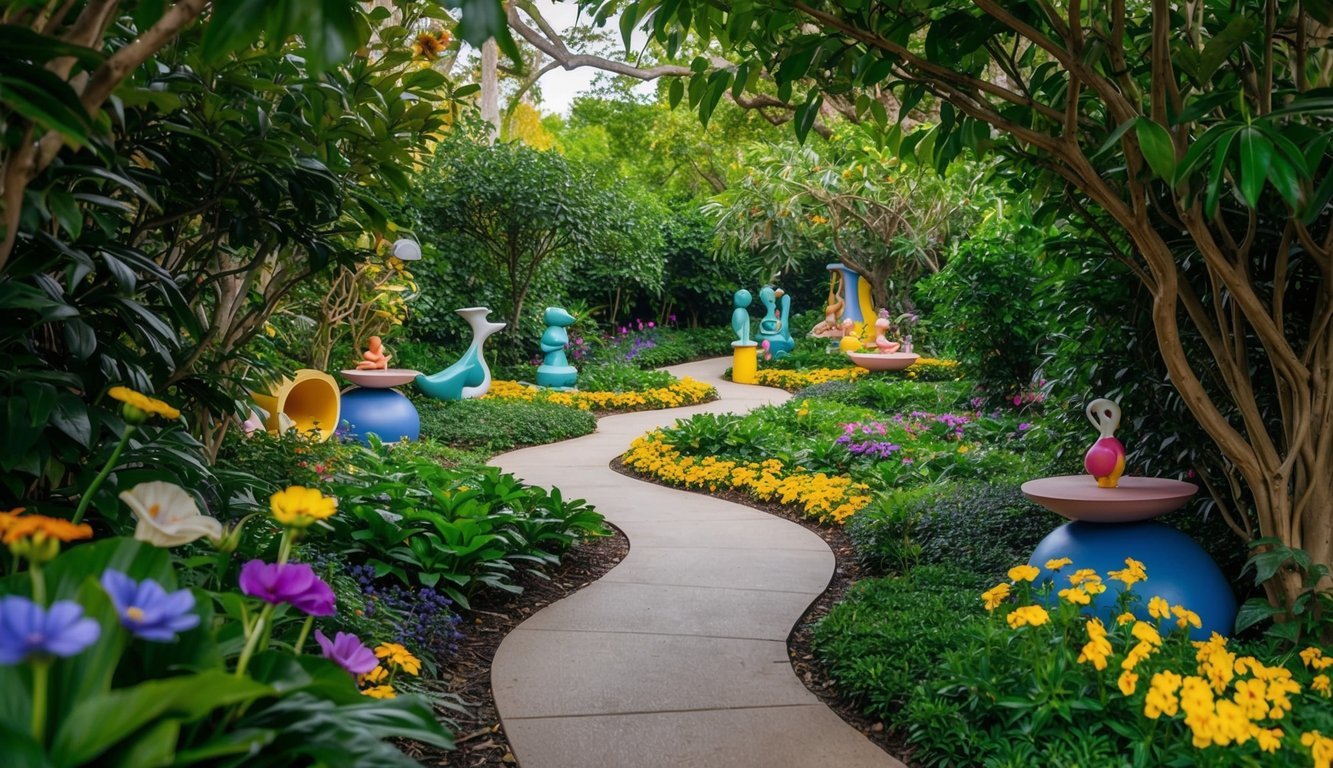
Creating a secret garden path is one of my favorite projects.
It invites exploration and adds charm to my outdoor space.
I like to start by choosing materials that blend well with nature.
Wood slices or rustic stones can give a unique touch, and these elements seem to fit right into the garden.
Adding plants along the edges makes the path feel more integrated.
I often use ferns or low-growing flowers.
They soften the look and create a hidden effect.
An archway can enhance the entrance to my secret path.
Covering it with climbing vines adds to the whimsical feel.
Plants like honeysuckle or wisteria work beautifully.
Lighting is another fun detail.
Placing solar lights along the path creates a magical atmosphere at dusk.
It’s like my own little fairyland right in my backyard.
This project not only beautifies my garden but also offers a peaceful retreat.
I can’t wait to see how it all comes together.
7) Start a Treehouse Project
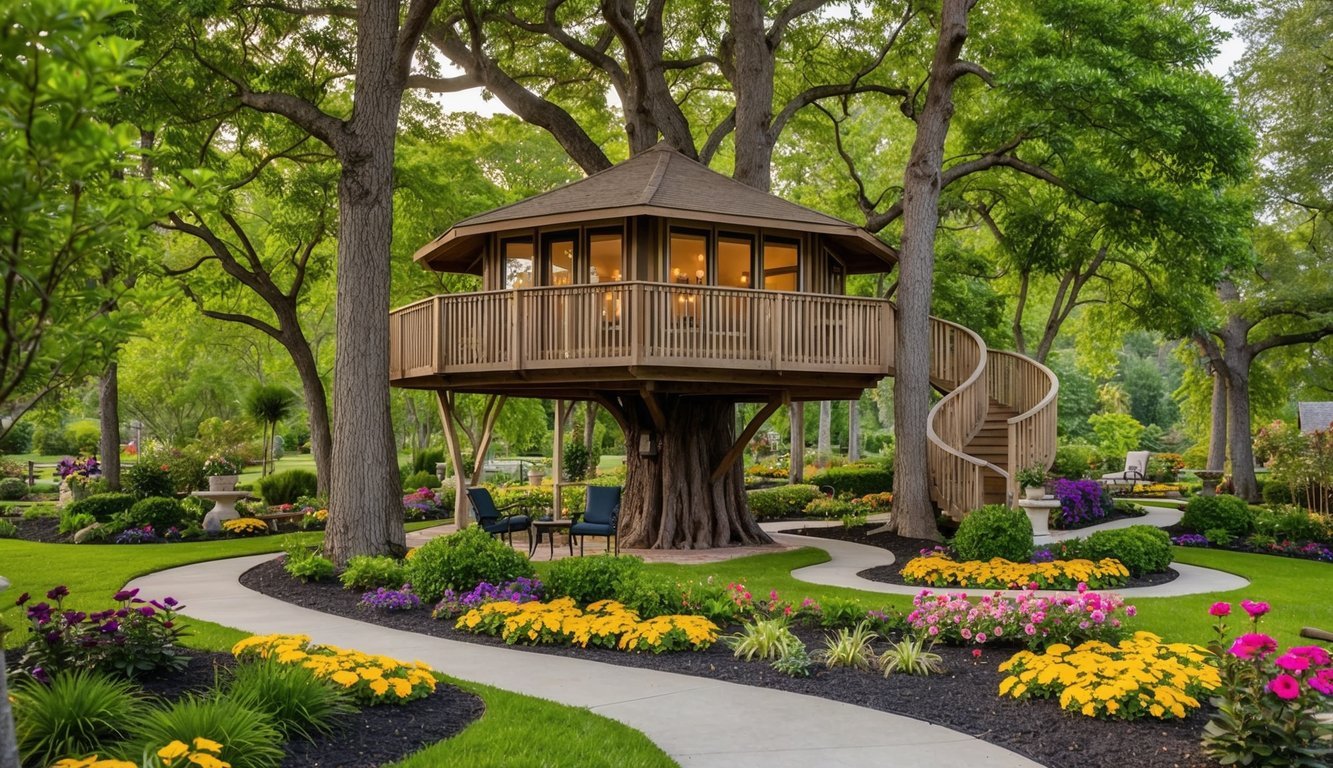
Building a treehouse can be a rewarding project for my retirement garden.
It offers a place to relax and enjoy nature while tapping into my creativity.
I can start by choosing a sturdy tree that’s healthy and has a strong trunk.
This will be the foundation of my treehouse.
Safety is crucial, so I plan to ensure that everything is stable and secure before I invite anyone up.
Next, I’ll gather materials.
Depending on my preferences, I might go for wood for a traditional look or even repurpose materials for a unique design.
There are many DIY plans available that cater to different styles and skill levels.
Once I have a plan, I can start building.
I love the idea of incorporating fun features like a slide or even a small deck.
This treehouse can serve as my personal hideaway, a perfect spot for reading or enjoying the view.
Lastly, I can add some finishing touches like cozy seating or decorative elements.
This project not only enhances my garden but also offers a fun space to enjoy time with family and friends.
8) Create a Giant Chessboard
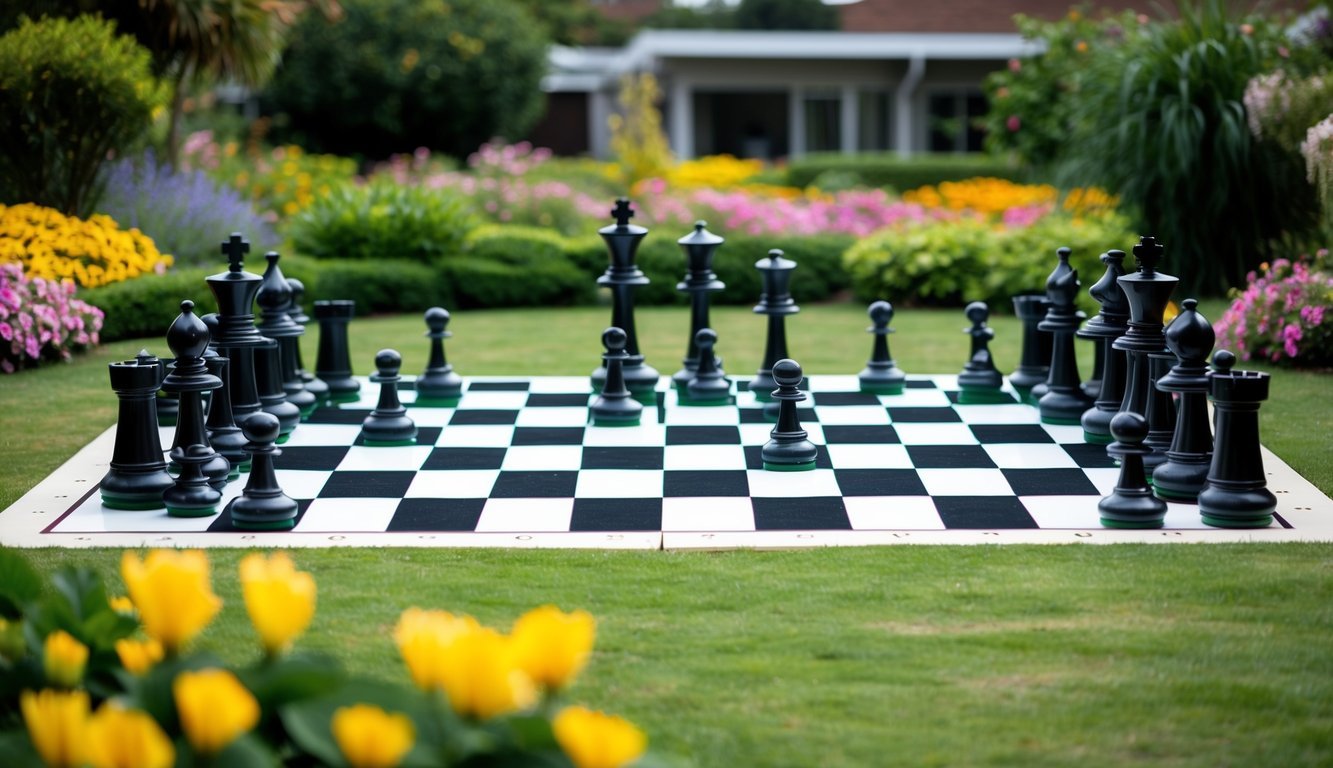
Creating a giant chessboard in my retirement garden is a fun and interactive project.
It’s a great way to add a unique touch to the space while encouraging outdoor play.
You can use large pavers or tiles, ideally sized at 12 to 18 inches.
This allows for creating a clear chessboard pattern, which will be visually striking.
I find that a 10 x 10 layout works well, giving enough room for movement.
For the border, choose a contrasting color to help define the spaces.
Framing the board with a solid structure ensures durability, especially in changing weather.
Setting up some giant chess pieces adds to the experience.
You can either buy them or make your own for a personal touch.
When friends visit, you can enjoy leisurely games that spark fun conversations.
This project doesn’t just look good; it also keeps your mind sharp.
Plus, it becomes a social hub, bringing neighbors together for friendly matches.
9) Install a Garden Labyrinth
Installing a garden labyrinth is a fun and rewarding project.
I love the idea of creating a peaceful space for reflection right in my backyard.
It’s a perfect activity that combines creativity and tranquility.
To start, mark the center of the labyrinth and lay out the design using stakes and rope.
This helps create a clear path.
You can opt for a classic pattern, like the Chartres style, because it’s easy to follow.
Next, choose the materials for the path.
You can use gravel, pavers, or even grass.
Mixing textures adds visual interest and keeps it fun.
After you set the boundaries, you can enhance the space with decorative elements.
Adding plants, sculptures, or even a small seating area makes it more inviting.
I often find myself or my friends walking the labyrinth to unwind.
It becomes a unique gathering spot and encourages connection with nature.
10) Launch a Mini Orchard
Creating a mini orchard in my garden is one of the most rewarding projects I can undertake.
Even a small space like a 15-foot by 15-foot plot can host a few fruit trees.
I love choosing high-yielding varieties to maximize my harvest.
When I select trees, I often consider dwarf or mini-dwarf types.
They fit perfectly in smaller areas and can still produce abundant fruit.
Columnar trees are also a great option if I’m tight on space.
Soil preparation is key.
I focus on improving fertility and ensuring good drainage.
If I choose to grow in containers, I opt for wide, shallow pots that allow for healthy root growth.
Watering regularly and pruning my trees keeps them healthy and productive.
I often enjoy the process of tending to my orchard, finding it meditative.
Planting in the fall can give my trees a head start, allowing them to yield fruit sooner.
Plus, it’s a fantastic way to enjoy fresh produce right from my garden.
Soil Preparation Basics
Getting the soil right is crucial for a thriving garden.
I focus on two key areas: testing the soil to understand its current condition and amending it so that it meets the needs of the plants I want to grow.
Testing Your Soil
Before planting anything, I always test my soil.
Testing helps me discover its pH and nutrient levels.
A simple soil test kit from the garden center can give me insights into whether my soil is acidic, basic, or neutral, which affects plant growth significantly.
I also look for texture and drainage.
Is it sandy, clayey, or loamy? The texture influences how well it retains water and nutrients.
Here’s a quick checklist for testing my soil:
- pH level: Aim for 6.0 to 7.0 for most veggies and flowers.
- Nutrient levels: Key nutrients include nitrogen (N), phosphorus (P), and potassium (K).
- Texture: Understand if it’s sand, silt, clay, or a mix.
Amending Soil for Optimal Growth
Once I have my soil test results, I amend it for better growth.
I might add organic matter like compost or well-rotted manure to enrich it.
This not only boosts nutrients but also improves texture and drainage.
Here are a few amendments I often use:
- Compost: Provides a broad range of nutrients and improves soil structure.
- Peat moss: Enhances moisture retention in sandy soils.
- Gypsum: Useful for improving clay soils without altering pH.
I also pay attention to the specific needs of my plants.
For instance, if I’m planting vegetables that love slightly acidic soil, I might add sulfur.
Adjustments can take time to work into the soil, so I usually plan ahead and mix amendments well before planting.
Choosing the Right Plants
Selecting the right plants for a garden can enhance its beauty, sustainability, and upkeep.
Considering native species and seasonal selections can make a significant difference in both the garden’s success and maintenance.
Native Plants and Their Benefits
Using native plants is a fantastic way to create a low-maintenance and eco-friendly garden.
These plants are well-adapted to the local climate and soil, making them easier to care for.
Benefits of Native Plants:
- Drought Resistance: Many native varieties thrive with minimal water.
- Support Wildlife: They provide habitats and food for local birds, pollinators, and other wildlife.
- Pest Resistance: Generally, they are less prone to pests and diseases.
I find that planting a variety of native flowers, shrubs, and grasses can create a vibrant, colorful space without the hassle of constant upkeep.
This approach also encourages biodiversity in my garden.
Seasonal Plant Selection
Selecting seasonal plants ensures that the garden remains lively and colorful year-round.
Important Considerations:
- Spring: Consider bright tulips or daffodils to welcome warmth.
- Summer: Opt for sun-loving plants like coneflowers or marigolds for vibrant blooms.
- Fall: Incorporate asters or ornamental grasses for beautiful autumn hues.
- Winter: Think about evergreen shrubs or winter-blooming hellebores to maintain color and life.
By staggering my plant selection throughout the seasons, I create a dynamic garden that changes beautifully, providing interest and enjoyment all year long.
Garden Maintenance Tips
Keeping a garden thriving requires attention to watering and pest control.
These practices can help ensure that plants remain healthy and productive.
Best Practices for Watering
Proper watering is crucial for garden health.
I always aim to water in the early morning or late afternoon to reduce evaporation.
Here are my main tips:
- Use a Soaker Hose: This method delivers water directly to the roots, minimizing waste.
- Check Soil Moisture: Before watering, I stick my finger in the soil. If it’s dry an inch down, then it’s time to water.
- Deep Watering: Rather than light, frequent watering, I prefer deep watering once or twice a week. This encourages roots to grow deeper.
Consistency is key.
I like to keep a simple watering schedule, adjusting based on weather conditions and plant needs.
Always observe how your plants respond, and you’ll find the right balance.
Pest Control Solutions
Managing pests is an essential part of keeping a garden flourishing.
Here are a few effective methods to keep unwanted visitors at bay:
- Regular Inspections: I check my plants weekly for signs of pests, such as holes in leaves or webs.
- Companion Planting: Some plants deter pests naturally. Marigolds repel nematodes, while basil can ward off flies and mosquitoes.
- Organic Treatments: Whenever I find bugs, I prefer to use neem oil or insecticidal soap. They’re effective and safe for the garden.
Creating a healthy garden ecosystem helps prevent pest issues from becoming overwhelming.
Keeping an eye out and being proactive can save a lot of trouble down the line.

